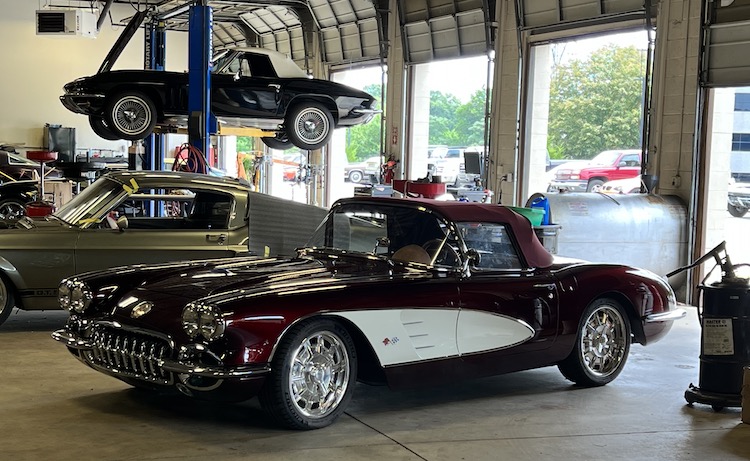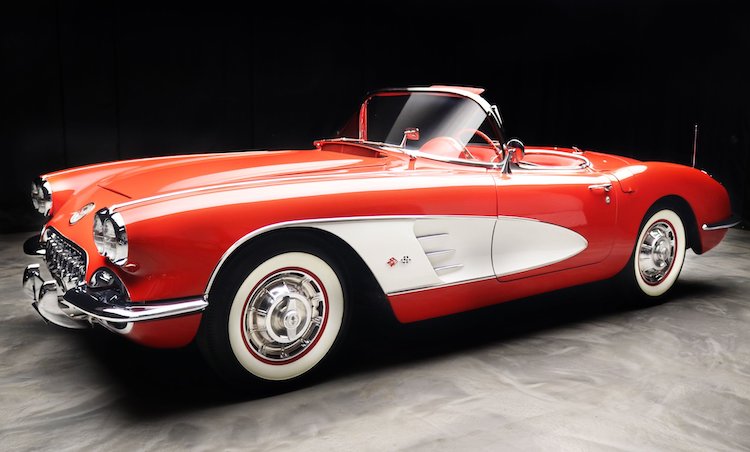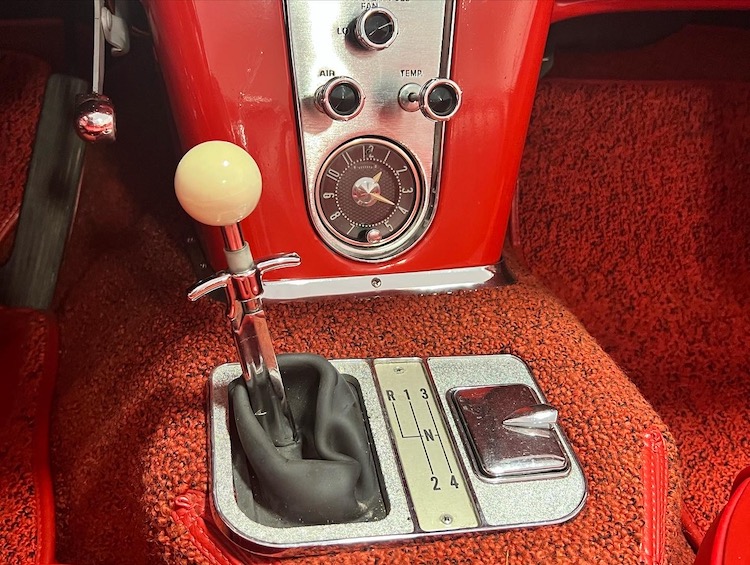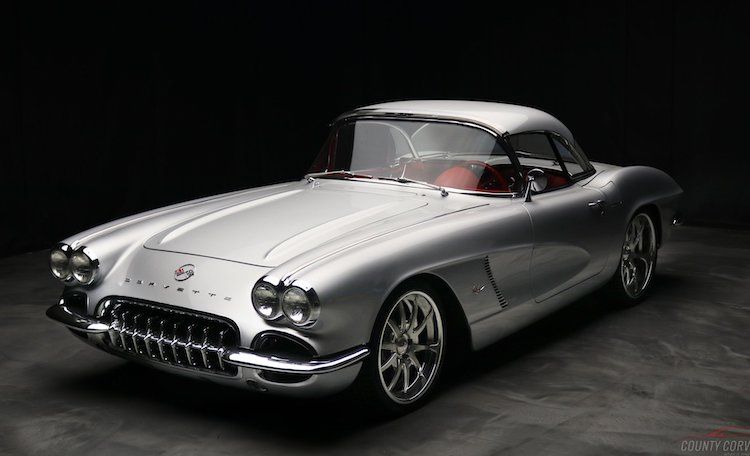A pretty face don’t make no pretty heart. By the same token, a drop dead gorgeous restomod can hide a multitude of sins. That’s because making a perfect body for an old car is difficult, but not that difficult. The hard bit: making an old car perform like a modern car. There are a lot of ways it can go seriously South: engine, steering, suspension and reliability (to name a few). Last week, I flew North to check out County Corvette, to get the lay of the land . . .
The first car Ed showed me – the 1962 silver C1 above – was not a County Corvettes’ build. The reality TV show Speed is the New Black made the mods. What you can’t see: bubbles in the paintwork along the hood line. This obvious defect – no doubt made under deadline pressure – left me wondering where else the Classic Car Studio cut corners (most if not all of which County Corvette corrected).
The ’62 is powered by a 430hp LS3 GM Performance E-Rod motor. The chassis includes a four-link rear suspension. It’s an ideal set-up for drag racing: bulletproof and bad ass. Comfortable cruising? Not so much. At $299k, you better love you some burnouts.
The paint problem proves provenance is paramount. A savvy restomod buyer needs to vet the builder as much as the car. Think of it this way: carmakers employ teams of experts who spend multiple millions designing, integrating, manufacturing and assembling automotive systems to provide an acceptable ownership and driving experience. How many small shops can do the same work, only better?
Sure, old cars are crap; badly built by humans using ancient technology. And yes, shoehorning new parts into an old car cures a lot of ills. It can also create new ones. A C1 with a big engine mated to a poorly programmed transmission with play in the steering and too-sharp brakes? Not a good look. Actually, it’s a good look on a bad car. Bottom line? A restomod is only as good as its builder.

Check out the County Corvette ’60 C1 build above. From its glossy paint, to the rock solid door clunk, to the quilted leather seats, the quality of the workmanship was unimpeachable. The retrofitted 6.2-liter engine and tranny proved tractable at speed. The suspension was well-sorted.
When County Corvette owner Jim Jordan gave the go-pedal a shove (at around 45mph), the C1’s rear tires lit up like a Christmas tree. When Jim hit the brakes, my eyeballs threatened to pop out of their sockets and bounce off the windscreen. The immaculate C1 was a muscle car in a pinstripe suit. How great is that?
Doesn’t matter. The brandywine-and-white C1’s a customer’s car. It’s not for sale. No worries! County Corvette is happy to build you a bespoke Corvette restomod anyway you want it: engine, suspension, transmission, paint, connectivity, etc.. All you have to do: make dozens of choices, wait well over a year and shovel tons of money into the Vette specialist’s bank account (and not necessarily in that order).
The Chester, Pennsylvania modder routinely charges between $350k and $450k for a full-on Corvette restomod – which may or may not include the donor car. Think that’s expensive? You can rack-up twice that at big name restomodders like Singer, RUF and Eagle E-Types.

Discussing filthy lucre while ogling gorgeous restomods seems a bit churlish, but if and when you sell your restomod, do you want to lose your proverbial shirt, break even or maybe even make money? The odds of getting out clean depend on the market (of course), the builder’s rep (as above) and the build.
Keep in mind that one man’s meat is another’s man’s poison (unless we’re talking about poisoned meat). Resale-wise, funky specs bad, tasteful mods good. There’s a reason elegant cars from the aforementioned heavy hitters fetch significant premiums on the pre-loved market.
Commissioning a low to middle-priced restomod from a relatively unknown builder is an excellent way to lose money. Even if you avoid garish choices, even if they don’t screw it up or leave you in the lurch, the chances of recouping your “investment” are lowrider low.
If you buy a completed car from a low to mid-tier modder you’ll probably get a bargain. Odds are the original owner spent a lot more money building the car than you paid. You won’t make a profit when you cash in your chips, but buy low, sell low is a better recipe than buy high, sell low.

The exotic and sports market is slipping into a coma. Top restomodders have enough work in progress to see them through the next year or two; there won’t be any discounts on the build side in the foreseeable future.
The best strategy: keep an eye out for a price-reduced example of a “finished” restomod from a reputable builder. Ping Tony Rienzi, tell him what you really, really want, and wait for his call. Remember: a lot of restomods look simply irresistible, but real beauty is more than skin deep.



I’ve heard from more than one custom shop that the show runners and producers will push through a job before it meets the shop’s stringent Q.C. It’s up to the shop to pull it back in and finish the job properly.
As for the restomod trend itself, still not a fan. Make them stop better than a Flintstone’s car and then leave them as is. They are only original once.